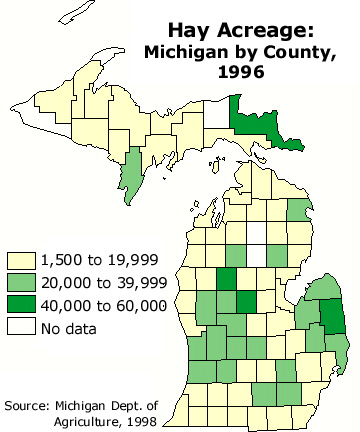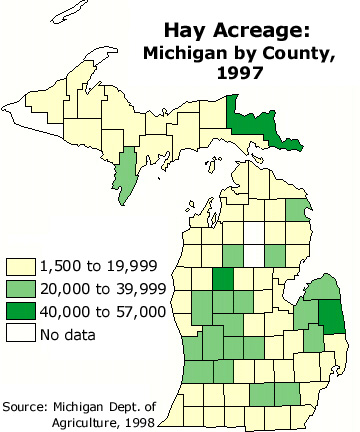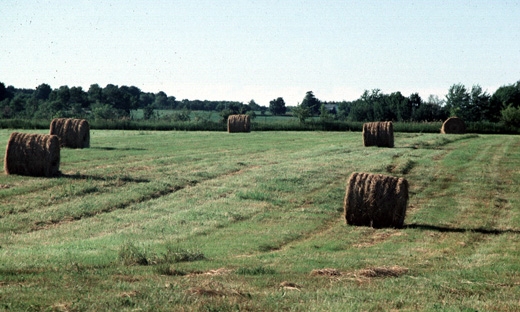HAY
Michigan's hay production was estimated at 5.8 million tons in 1993, up 25% from 1992.
Alfalfa and alfalfa mixtures accounted for 87% of all hay produced. Harvested acres
increased 100,000 acres from the previous year, to 1.5 million. The average all hay yield
was 3.86 tons per acre, up 0.55 tons from 1992. Value of the hay crop was $388.3 million,
up 8% from a year earlier, while the average price per ton decreased to $68.00 from $77.50
in 1992.


Hay, which includes dried forage crops like alfalfa, clover and other legumes and
grasses, is an important part of the dairy cow's diet. It provides the necessary
roughage for the cow, and is a protein source as well. Note that hay can be grown
throughout Michigan. It has historically been, and still is, an important commodity
on the wet, clay plains of Chippewa County.
Hay is cut two to three times per year. After each cutting, shown below in a series of images, the hay is allowed to dry for a day or two and then baled into round or square bales.

Source: Photograph by Randy Schaetzl, Professor of Geography - Michigan State University
Today, much of the hay crop is stored in silos, as "haylage". Haylage has the advantage of being easy to cut, process, and store with minimal effort (i.e., the process is more mechanized than is baling hay into dry bales). Below, cows munch on haylage.
This material has been compiled for educational use only, and
may not be reproduced without permission. One copy may be printed for personal
use. Please contact Randall Schaetzl (soils@msu.edu)
for more information or permissions.